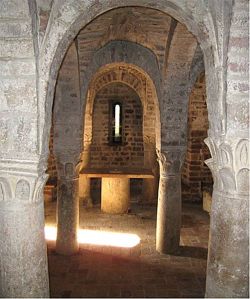The new fraternity of Bose in Assisi
We are happy to be able finally to announce that in the course of these months we have acquired the Monastery of San Masseo in Assisi. After the work of restructuring, which has already begun, it will house, Deo volente, a new fraternity of our community. More than ten years after the closing of the fraternity of San Benedetto because of the earthquake
We are happy to be able finally to announce that in the course of these months we have acquired the Monastery of San Masseo in Assisi. After the work of restructuring, which has already begun, it will house, Deo volente, a new fraternity of our community. More than ten years after the closing of the fraternity of San Benedetto because of the earthquake, we can thus return to be present in the town that St Francis loved.
The monastery of San Masseo is situated halfway up the hill of Assisi, between San Damiano and Santa Chiara, along the ancient road that use to be called the “stony way”, which descended from Porta Mojano towards the valley and the cultivated fields. According to documentary sources, the monastery of San Masseo de Plathea ? this is its ancient name ? was founded in the eleventh century, between 1059 and 1091, by a certain count Lupone, probably on the spot where earlier had stood a pagan temple, as scholars hold on the basis of archeological findings. In May 1130 the church of San Masseo with all its properties was ceded to the abbot of S. Croce of Sassovivo, under whose jurisdiction it remained until 1503, when the priory of San Masseo was incorporated into the properties of the abbey of St Peter in Assisi, to which it belonged until now. According to an old oral tradition, as we like to recall, on the spot where San Masseo stands St Francis used to spend time in prayer. Only the beautiful apse, strangely turned towards the west rather than towards the east, and the crypt, one of the oldest of the diocese, a little earlier than that of San Rufino of 1028, remain of the old complex.
We are grateful to the Lord for this gift, conscious of the great responsibility that is implied by receiving in custody from monastic tradition stones so full of history and of memories, and we trust in his help and in the support of those of our friends and guests who in all these years of absence from Assisi let us know of their desire to see us return there one day. Our brotherly thought also goes to fr. Cipriano Carini and to the Benedictine community of the abbey of St Peter in Assisi, united in the common monastic vocation.
